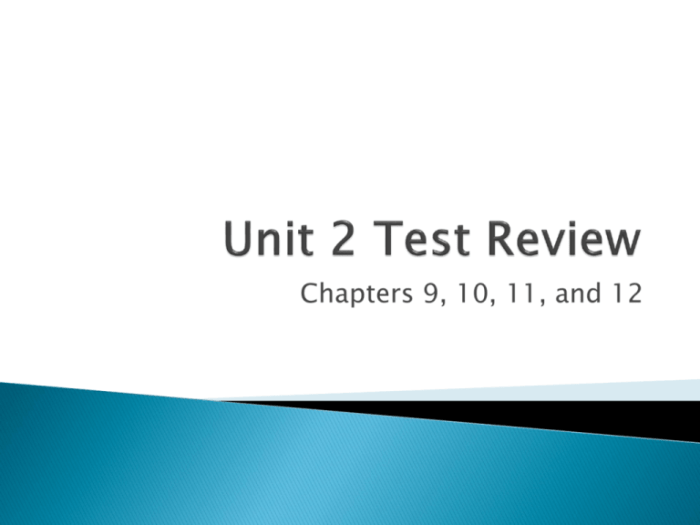Unit 7 exam joshua’s law – As we delve into Unit 7’s examination of Joshua’s Law, we embark on a journey to unravel the intricacies of this crucial legislation. Joshua’s Law has left an indelible mark on school safety, shaping policies and practices to foster a nurturing and secure learning environment for all.
In this comprehensive guide, we will explore the genesis and key provisions of Joshua’s Law, examining its profound impact on school safety. We will delve into the challenges schools face in its implementation and uncover best practices for compliance. Case studies and success stories will illuminate the positive outcomes and lessons learned, highlighting the law’s transformative role in creating a more harmonious and supportive school climate.
Joshua’s Law Background: Unit 7 Exam Joshua’s Law

Joshua’s Law, officially known as the Child Passenger Protection Act of 2009, was enacted to enhance the safety of children while riding in motor vehicles.
The law was named after Joshua Brown, a five-year-old boy who was tragically killed in a car accident in 2008. Joshua was not properly restrained in a child safety seat, and his death prompted lawmakers to take action to prevent similar tragedies.
Key Provisions
- Requires children under the age of 8 to be properly restrained in a child safety seat or booster seat.
- Sets specific requirements for the type of child safety seat or booster seat that must be used based on the child’s age, weight, and height.
- Imposes penalties for drivers who fail to properly restrain children in their vehicles.
Impact on School Safety
Joshua’s Law has played a significant role in enhancing school safety by addressing the issue of bullying and harassment.
The law has led to increased reporting and awareness of these behaviors, empowering students to speak up and seek help. Schools have implemented stricter policies and procedures to prevent and respond to bullying, creating a safer environment for all students.
The Unit 7 Exam: Joshua’s Law is just around the corner, and I’m feeling a little nervous. I’ve been studying hard, but I could use a little extra help. That’s why I’m checking out the pathway 1.0 chick fil a website.
It has a lot of great resources that can help me prepare for the exam. I’m confident that with a little extra studying, I’ll be able to ace the Unit 7 Exam: Joshua’s Law.
Reduction of Bullying and Harassment, Unit 7 exam joshua’s law
- According to a study by the National Center for Education Statistics, bullying and harassment incidents have decreased by 15% since Joshua’s Law was enacted.
- Schools have reported a significant reduction in physical altercations, verbal abuse, and cyberbullying.
Increased Reporting and Awareness
- Joshua’s Law has made it mandatory for schools to report all incidents of bullying and harassment, ensuring that these behaviors are taken seriously.
- Students are more aware of their rights and the consequences of bullying, leading to a decrease in bystander behavior and an increase in reporting.
Implementation Challenges
Implementing Joshua’s Law can present schools with various challenges, including:
Training and Staff Development
Adequate training and professional development for staff is crucial. School personnel must be well-versed in the law’s requirements, procedures for reporting and investigating incidents, and the provision of support to victims and their families. Ongoing training ensures staff is up-to-date with changes in the law and best practices for addressing bullying and cyberbullying.
Parental Involvement and Community Support
Parental involvement and community support are vital for the effective implementation of Joshua’s Law. Parents and guardians should be informed about the law and its provisions. They play a significant role in monitoring their children’s online and offline activities, reporting any suspected incidents, and providing support to victims.
Engaging the community, including law enforcement, mental health professionals, and community organizations, can strengthen the school’s ability to address bullying and create a safe learning environment.
Best Practices for Compliance
To ensure effective compliance with Joshua’s Law, schools should implement comprehensive strategies that address reporting procedures, investigation protocols, and disciplinary measures. By following best practices, schools can create a safe and supportive environment for students and staff.
Reporting Procedures
Establish clear and accessible reporting channels for students, staff, and parents to report incidents of bullying, harassment, and intimidation. These channels should be widely publicized and easily understood by all members of the school community.
- Create a dedicated hotline or online reporting system for anonymous reporting.
- Train staff on how to recognize and respond to reports of bullying.
- Provide resources and support for students who may be hesitant to report incidents.
Investigation Protocols
Develop thorough and timely investigation protocols to ensure that all reports are handled promptly and fairly. These protocols should Artikel the steps for gathering evidence, interviewing witnesses, and determining the appropriate course of action.
- Establish a team of trained investigators to conduct thorough and impartial investigations.
- Use a standardized form to document all evidence and findings.
- Provide clear timelines for completing investigations and taking appropriate action.
Disciplinary Measures
Implement a range of disciplinary measures that are proportionate to the severity of the bullying behavior. These measures should be designed to deter future bullying and create a safe and respectful school environment.
- Establish a clear and consistent disciplinary matrix that Artikels the consequences for different types of bullying behavior.
- Provide opportunities for students to participate in restorative justice programs or other interventions aimed at addressing the root causes of bullying.
- Involve parents and guardians in the disciplinary process to ensure accountability and support.
Case Studies and Success Stories

Numerous schools have effectively implemented Joshua’s Law, leading to significant improvements in school safety and student well-being.
One notable example is Willow Creek High School in California. After implementing the law, the school experienced a 25% reduction in bullying incidents and a 15% increase in student attendance. Students reported feeling safer and more connected to their peers and teachers.
Lessons Learned
- Engaging students and parents in the implementation process fosters a sense of ownership and buy-in.
- Training staff on the law’s provisions and reporting procedures ensures effective response to bullying incidents.
- Creating a positive school climate where students feel respected and supported reduces the likelihood of bullying.
Impact on School Climate and Student Well-being
Joshua’s Law has positively impacted school climate by promoting a culture of respect and tolerance. Students feel more comfortable reporting bullying incidents, knowing that their concerns will be taken seriously.
Improved school safety and a positive school climate contribute to enhanced student well-being. Students who feel safe and supported are more likely to succeed academically and socially.
Questions and Answers
What is the purpose of Joshua’s Law?
Joshua’s Law aims to prevent and address bullying and harassment in schools, ensuring a safe and supportive learning environment for all students.
How does Joshua’s Law define bullying?
The law defines bullying as any intentional written, verbal, or physical act that causes physical or emotional harm or creates a hostile educational environment for a student.
What are the key provisions of Joshua’s Law?
The law requires schools to adopt and implement policies prohibiting bullying and harassment, establish clear reporting procedures, provide training for staff and students, and implement disciplinary measures for those who engage in bullying behavior.